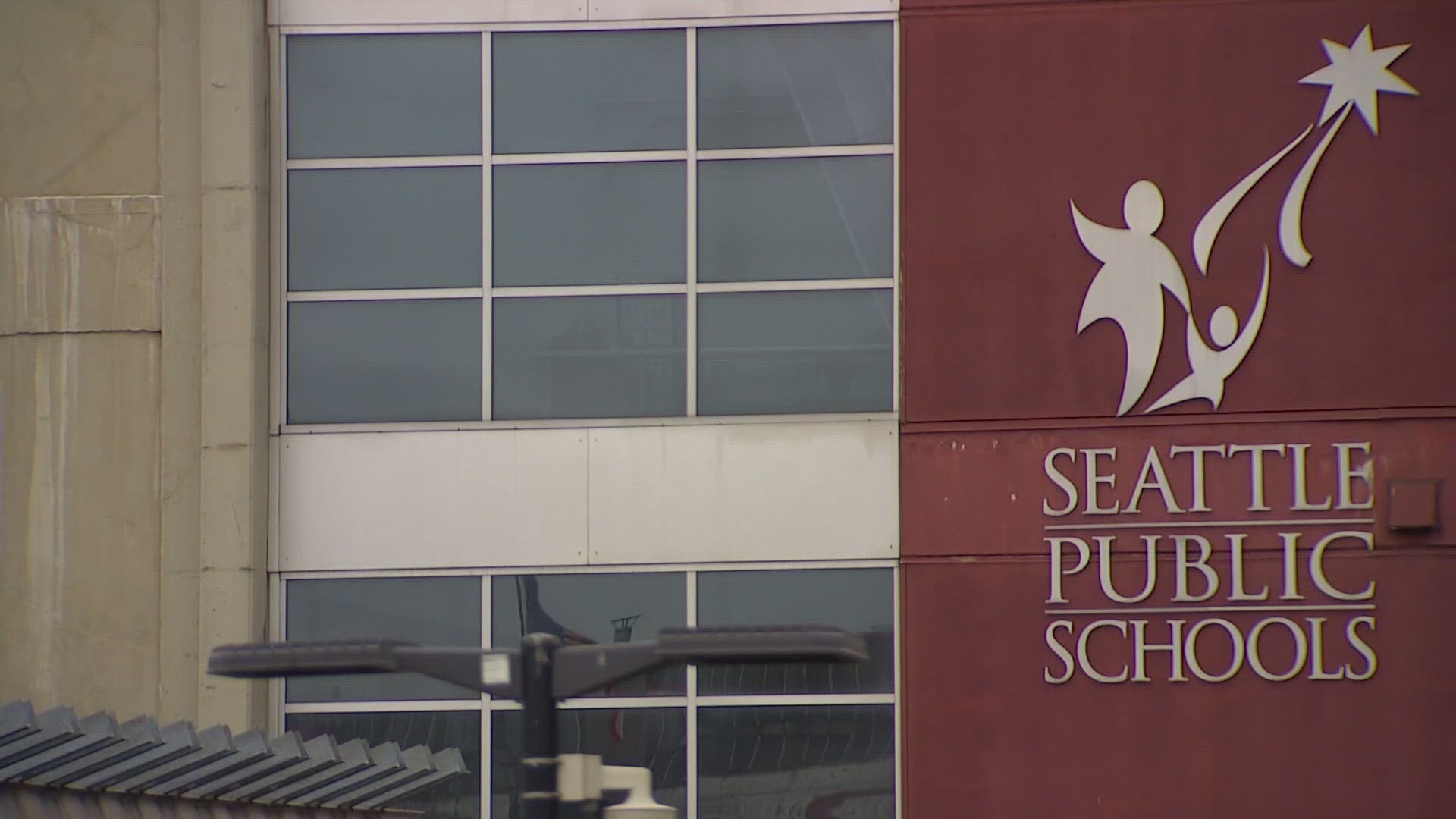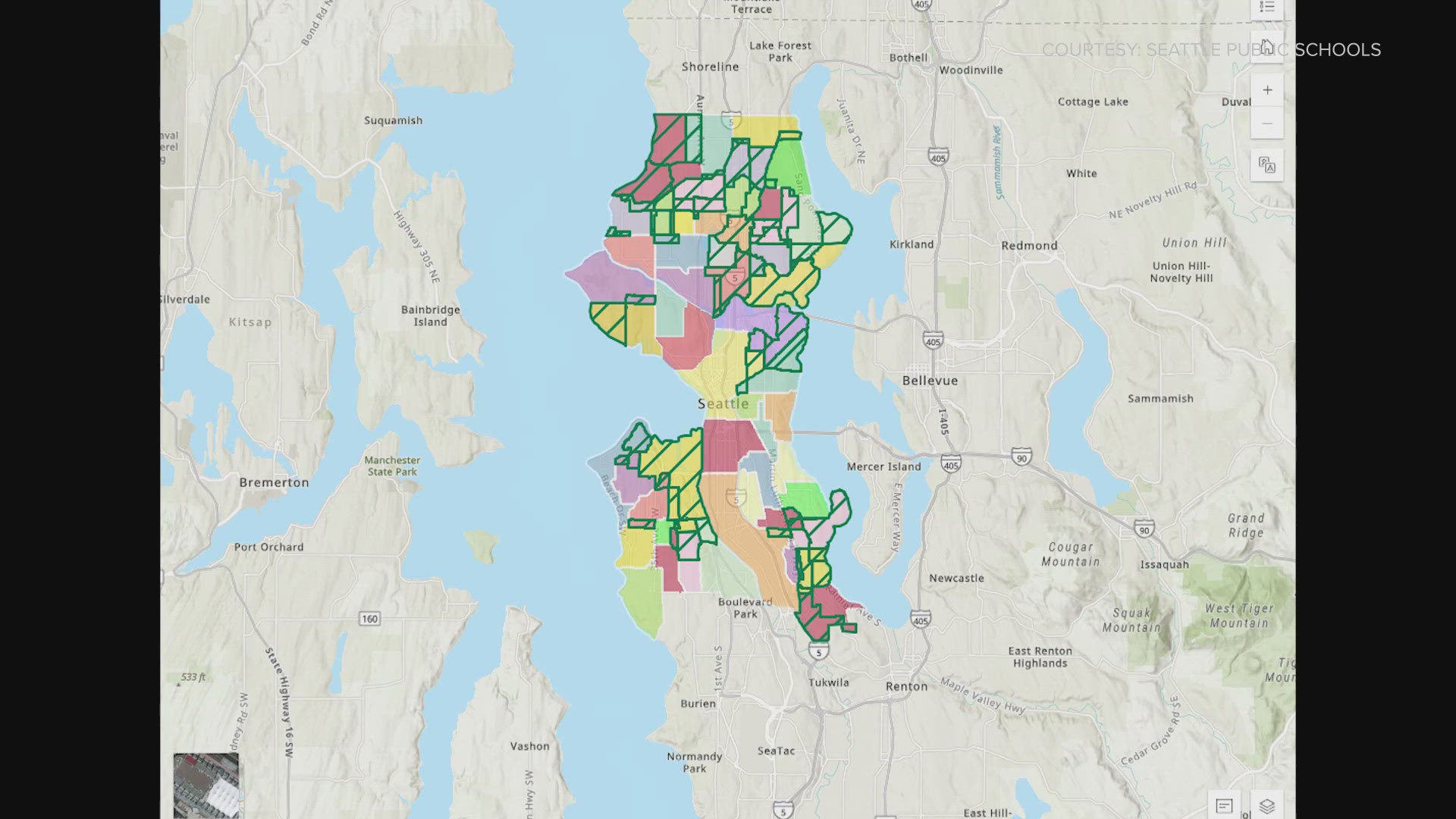5 things to know about the proposals for closing Seattle public schools
Here's what to know leading up to the final decision expected before the end of the year.

Seattle Public Schools could close as many as 21 schools next year as district leadership works to close a major budget gap.
Here's what to know leading up to the final decision expected at the end of the year.
Schools at risk
The district released two options that would save $31.5 million and $25.5 million, respectively. The first option would close 21 schools, the second 17.
Both options focus on closing elementary schools, of which the district currently has 73, with one also eliminating K-8 and option elementary schools, while the second option would keep a K-8 option open in each region.
Among the district's elementary and K-8 schools, the average elementary school enrollment is 317 students, with 29 elementary and K-8 schools housing fewer than 300. The proposals would drastically reduce the number of small schools operating in the district.
What caused the shortfall
The district cites shrinking student enrollment and less federal funding as the primary causes of its budget gap.
Enrollment has been on the decline since it peaked in 1964 with 94,042 students.
Between 2019 and 2023, Seattle Public Schools has seen enrollment decrease by about 4,900 students.
Total enrollment in the current school year is about 48,000 students.
School districts receive state funding based on a number of factors, with student enrollment being given the most weight when it comes to how much money will be allocated. The 4,900 students the district lost between 2019 and 2023 equals about $66 million in revenue through the state's funding model.
According to the school district, enrollment is expected to continue to decline over the next 10 years.
Addressing the deficit
Seattle Public Schools estimates show a $94 million budget gap for the 2025-26 school year.
The district has a $1.2 billion budget.
The district anticipates receiving $20 million to $30 million in one-time resources to help. However, that leaves a shortfall of between $50 million and $75 million.
The district estimates that each elementary or K-8 school closed would save between $750,000 and $2.5 million. On average, closing a school serving students in kindergarten through fifth grade would save the district about $1.5 million.
Additionally, the district anticipates it would save more money from more centralized operations.
The district notes that the outcome of the 2025-26 legislative session could determine whether further reductions are needed.
Alternatives and other options
According to the district, an alternative to closing schools would be reducing staff. However, those kinds of cuts would be "in direct opposition to the district and community's vision for a system of well-resourced schools."
The district lists other possibilities to save money, including additional class size increases and changes to labor contracts, which could result in up to $5 million each in savings. Other examples include reductions or the elimination of services and programs.
In the proposed budget for 2024-25, $913.7 million would be spent on teaching and teaching support, according to the district. The other $339 million is spent on support activities ($202 million), school administration ($68 million), and central administration ($69 million).
When it comes to reducing central administration to cover the deficit, the district points out spending there was reduced from 6.4% to 5.5% of the total operations budget for 2024-25. The district also says its spending on central administration is "in line with other peer districts," according to its website.
What's next
The proposed closure options were made public on Sept. 11, 2024. Work will continue into the end of the year, when a final school board vote is expected.
Here's the timeline:
September and October: Regional in-person and online information meetings. Learn more about those opportunities here.
October: District Superintendent Dr. Brent Jones will present the proposal to the school board
October and November: A public hearing will be held at each school on the proposed closure list
November and December: The school board is expected to vote on the proposed plan before winter break, which begins Dec. 23.


